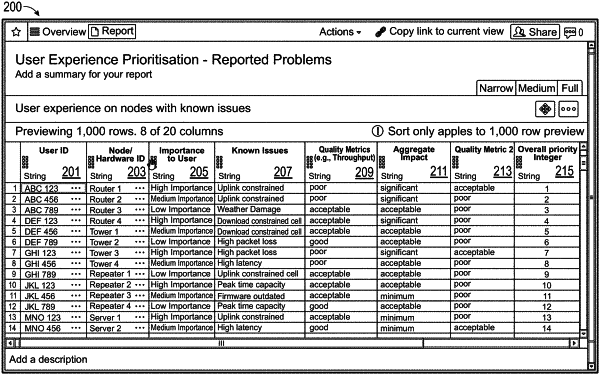| CPC H04L 41/0876 (2013.01) [G06F 18/24323 (2023.01); H04L 41/0609 (2013.01); H04L 41/5022 (2013.01); H04L 41/5067 (2013.01); H04L 41/5074 (2013.01)] | 20 Claims |

|
1. A computer system comprising:
one or more computer processors configured to execute computer executable instructions to cause the computer system to:
access a model that has been trained, using historical data associated with a plurality of users of a network, to generate importance values for reported problems based on at least demographics data for the plurality of users of the network and network usage data for the plurality of users of the network;
receive a reported problem from a new user of the network and about a connection to the network of a first computer device of the new user;
apply the model to at least the reported problem and the new user to generate an importance value;
determine a node in the network with a connection to the first computer device;
create at least a first work order based on one or more actions to be taken for the node;
calculate a first priority value for the first work order based at least in part on the importance value; and
cause the first work order to be executed based at least in part on the first priority value.
|